What Is Mirra Coffee? How Do You Make It?
Coffee is a drink that is admired in many parts of the world because it is made in unique ways and served in different ways. Different types of coffee, which are called different things in different parts of the world, leave different tastes on the tongue based on how they smell and taste.
Mirra coffee is a type of coffee that has been popular in Turkey for a long time, especially in the Southeastern Anatolia regions like Mardin, Gaziantep, and Sanliurfa. Mirra coffee is thought to have come from Arabia.
Keep reading to learn more about what it is and how to make it.
What Is Mirra Coffee?
The word “Mirra” comes from the Arabic word for “bitter.” Mirra coffee is a strong brew made with dark-roasted Arabica coffee beans and cardamom. It is served in a 2-ounce cup.
The coffee beans are roasted twice to make them taste more bitter, and then they are ground into a coarse powder. Then, this is cooked a few times until it gets thicker and the flavor gets stronger. Some people like to add other spices, like cardamom, to experiment with the taste and flavor.
The coarser grind used for Mirra coffee gives it a Greek-style coffee profile or traditional Turkish coffee, resulting in a somewhat grittier mouthfeel.
Interesting History Of Mirra Coffee
Mirra coffee’s history begins in Africa because it can only grow in a tropical climate. Around the 15th century, Yemen sent the first Mirra coffee to the Middle East. At that time, Yemen was the best place to get Mirra coffee. During the rule of the Ottoman Sultan Suleiman the Magnificent, coffee shops are said to have opened up soon after in Istanbul.
Mirra coffee is a specialty of the Turkish city of Urfa, where it plays an important cultural role. Its preparation is left to coffee masters, who pass their trade from father to son.
The addition of cardamom or other spices and the general bitter taste of the coffee itself can be explained by the Arabic influence of the region, considering the immediate proximity of each other.
How To Make Mirra Coffee
Mırra coffee is actually a method of preparing and cooking coffee. You can make Mırra with any coffee you want.
The feature that distinguishes this coffee from others is that the coffee beans are roasted twice and then beaten in a mortar called “dibek,” but it is key not to crush it too much, as is the case with Turkish coffee.
Mirra coffee is made in a small, narrow pot with a long handle called a cezve or an ibrik. It’s the same thing you’d use at home to make Turkish coffee.
But the way it’s made is a little different from how traditional Turkish coffee is made. Mirra coffee is made by bringing the coffee to a full boil. Before the coffee grounds are put in, sugar and cardamom are often added to the water.
Because Mirra coffee uses coarser coffee grounds, it needs more heat to get the flavor out. Since Turkish coffee grounds are very finely ground, boiling them would pull out too many bitter compounds, making the coffee taste bad.
What you’ll need to make Mirraa coffee:
- Ibrik
- Two tablespoons finely-ground Italian roast arabica coffee beans
- One teaspoon of ground cardamom
- Two teaspoons of sugar, or to taste
- ¼ cup room temperature water
- Fine mesh sieve
- Demitasse cup
Step 1: Brew the coffee.
Bring a quarter cup of water to a simmer over medium heat with a teaspoon of cardamom and two tablespoons of sugar in an ibrik. When the water is at a rolling boil, add two tablespoons of freshly ground Italian roast arabica coffee.
When the coffee begins to foam, take it away from the heat and set it aside for a few seconds to settle. It is recommended to heat the ibrik again and repeat this process three more times.
This process takes quite a while but makes for an interesting flavor.
Step 2: Strain and serve the coffee.
Now you can serve the coffee after filtering it through a sieve with a very fine mesh, and serve. Keep in mind that filtering the Mirra coffee is optional.
Conclusion
Traditionally, the Mirra coffee is served in a small cup without a handle and is filled to about one-third. The coffee is drunk all at once. If you do not want to drink anymore, you hand the cup back to the server. But if you put the cup down, it can be seen as a grave insult to the server.
This tradition is no longer alive in this manner, but rather, the server gets a tip if the cup is put down.

Amit Gupta
Hi, my name is Amit Gupta, and I am the owner and contributor at Cafeish. My obsession with coffee started when I received my first French press as a gift almost ten years ago. Since then, my love of coffee – and the number of coffee gadgets I own – has grown considerably.
Most Popular
ABOUT US
We are a team of coffee affcianados with experience and expertise in making world renowned coffee. In fact, preparing the best coffee ever with a fluffy top reminds us of magic, with secrets of how to achieve each particular effect. Making coffee is not our only hobby, we always keep our ears open as to what’s happening around and what scientists and manufacturers produce for consumers. It’s not an easy task to do – it’s rather time consuming. Hence, Caféish website was launched.
LEGAL DISCLAIMER
Caféish is a participant in the Amazon Services LLC Associates Program, an affiliate advertising program designed to provide a means for sites to earn advertising fees by advertising and linking to Amazon.com. Caféish also participates in affiliate programs with Clickbank and other sites. Caféish is compensated for referring traffic and business to these companies.




